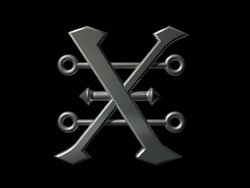

It may be, however, that the - an suffix represents the Semitic dual ending. Some regard it as having been formed from neḥoshet + the affirmative - an, and meaning "a copper object." Others note the play on words involving naḥash ("snake"), neḥoshet ("copper"), and perhaps also the verb niḥesh ("to practice divination"). The origin of the name Nehushtan is uncertain. Some scholars regard the chapters in Numbers as an etiological account serving to justify the original adoption of this pre-Israelite cult-figure by the Jerusalemite priest-hood, and as an attempt to emphasize the independent healing power of the Lord. It is unclear from the end of ii Kings 18:4 whether it was Hezekiah or the people who named the image Nehushtan. It had come to be looked upon as idolatrous, on a par with the bamot ("High Places") and Asherah-groves, because the people had accepted it as a fetish, offering incense to it (the form kitter ( qiṭṭer) instead of hiktir ( hiqṭir) has a pejorative connotation).

Although the Pentateuch account regards the copper serpent as legitimate, King *Hezekiah broke it to pieces (ii Kings 18:4) in the course of his reforms. Since the peril was identified with the demonic power within the serpent, the copper image mounted on a staff constituted a counter-equivalent power which was an effective prophylaxis. The purpose of the image was therapeutic anyone bitten by a serpent could be healed by looking at it (cf. The instructions from the Lord followed a plague of " *seraph-serpents" sent against the people of Israel in the course of their wanderings through the desert. נְחַשׁ נְחשֶׁת neḥash neḥoshet), a symbol set upon a standard by Moses at the Divine command (Num. COPPER SERPENT, THE (av, rv, "brazen serpent") (Heb.


 0 kommentar(er)
0 kommentar(er)
